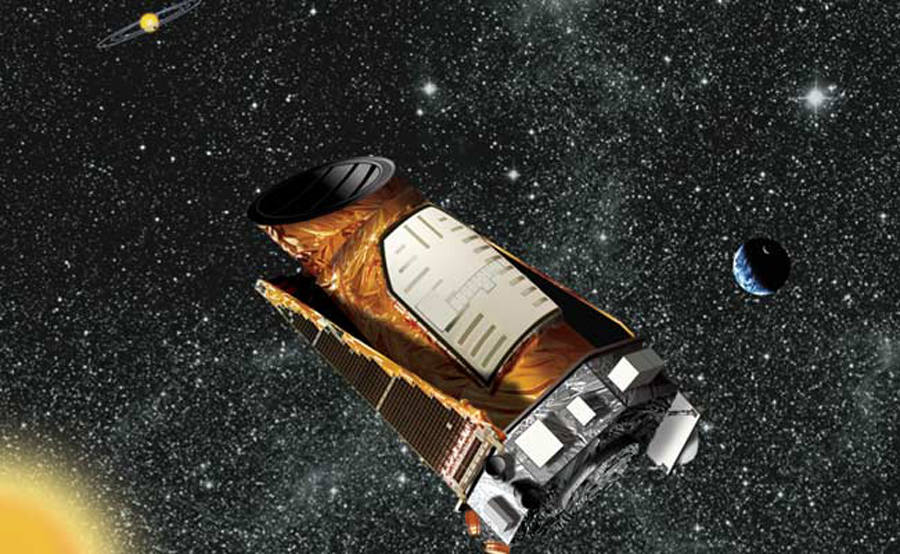Cover Taken Off Planet-Hunting Telescope

NASA's planet hunting Kepler telescope launched March 6. Before it can find planets, its protective dust cover had to be jettisoned. that has been done, NASA announced yesterday.
"The cover released and flew away exactly as we designed it to do," said Kepler Project Manager James Fanson of NASA's Jet Propulsion Laboratory, Pasadena, Calif. "This is a critical step toward answering a question that has come down to us across 100 generations of human history — are there other planets like Earth, or are we alone in the galaxy?"
Kepler's mission is to spend more than three years gazing at more than 100,000 stars in our Milky Way galaxy for signs of Earth-size planets. Some of the planets are expected to orbit in a star's "habitable zone," a warm region where water could pool on the surface.
The mission's science instrument, called a photometer, contains the largest camera ever flown in space. Its 42 charge-coupled devices (CCDs) will detect slight dips in starlight, which occur when planets passing in front of their stars partially block the light from Kepler's view.
The telescope's oval-shaped dust cover, measuring 1.7 meters by 1.3 meters (67 inches by 52 inches), protected the photometer from contamination before and after launch. The dust cover also blocked stray light from entering the telescope during launch — light that could have damaged its sensitive detectors. In addition, the cover was important for calibrating the photometer. Images taken in the dark helped characterize noise coming from the instrument's electronics, and this noise will later be removed from the actual science data.
"Now the photometer can see the stars and will soon start the task of detecting the planets," said Kepler's Science Principal Investigator William Borucki at NASA's Ames Research Center, Moffett Field, Calif. "We have thoroughly measured the background noise so that our photometer can detect minute changes in a star's brightness caused by planets."
How it was done: At 10:13 p.m. ET on April 7, engineers at Kepler's mission operations center at the Laboratory for Atmospheric and Space Physics, Boulder, Colo., sent commands to pass an electrical current through a "burn wire" to break the wire and release a latch holding the cover closed. The spring-loaded cover swung open on a fly-away hinge, before drifting away from the spacecraft. The cover is now in its own orbit around the sun, similar to Kepler's sun-centric orbit.
Get the Space.com Newsletter
Breaking space news, the latest updates on rocket launches, skywatching events and more!
Calibrations based on observations of stars will last several weeks before science observations begin.
- Video - NASA's Kepler: Hunting Alien Earths
Join our Space Forums to keep talking space on the latest missions, night sky and more! And if you have a news tip, correction or comment, let us know at: community@space.com.

Space.com is the premier source of space exploration, innovation and astronomy news, chronicling (and celebrating) humanity's ongoing expansion across the final frontier. Originally founded in 1999, Space.com is, and always has been, the passion of writers and editors who are space fans and also trained journalists. Our current news team consists of Editor-in-Chief Tariq Malik; Editor Hanneke Weitering, Senior Space Writer Mike Wall; Senior Writer Meghan Bartels; Senior Writer Chelsea Gohd, Senior Writer Tereza Pultarova and Staff Writer Alexander Cox, focusing on e-commerce. Senior Producer Steve Spaleta oversees our space videos, with Diana Whitcroft as our Social Media Editor.









